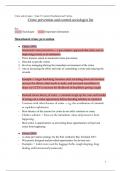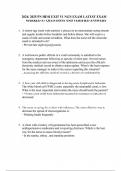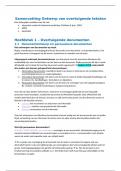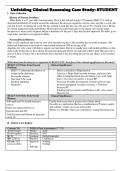Summary
Summary of Crime and Deviance - Control, Punishment and Victims (AS, A-level and GSCE)
- Institution
- AQA
In-depth notes on Control, Punishment and Victims in terms of Crime and Deviance. It includes the necessary sociologists and recent statistical data to take your grade to the next level. Exams come pre-highlighted to focus on the essential aspects needed in an essay/exam. These notes gave me an A* ...
[Show more]













